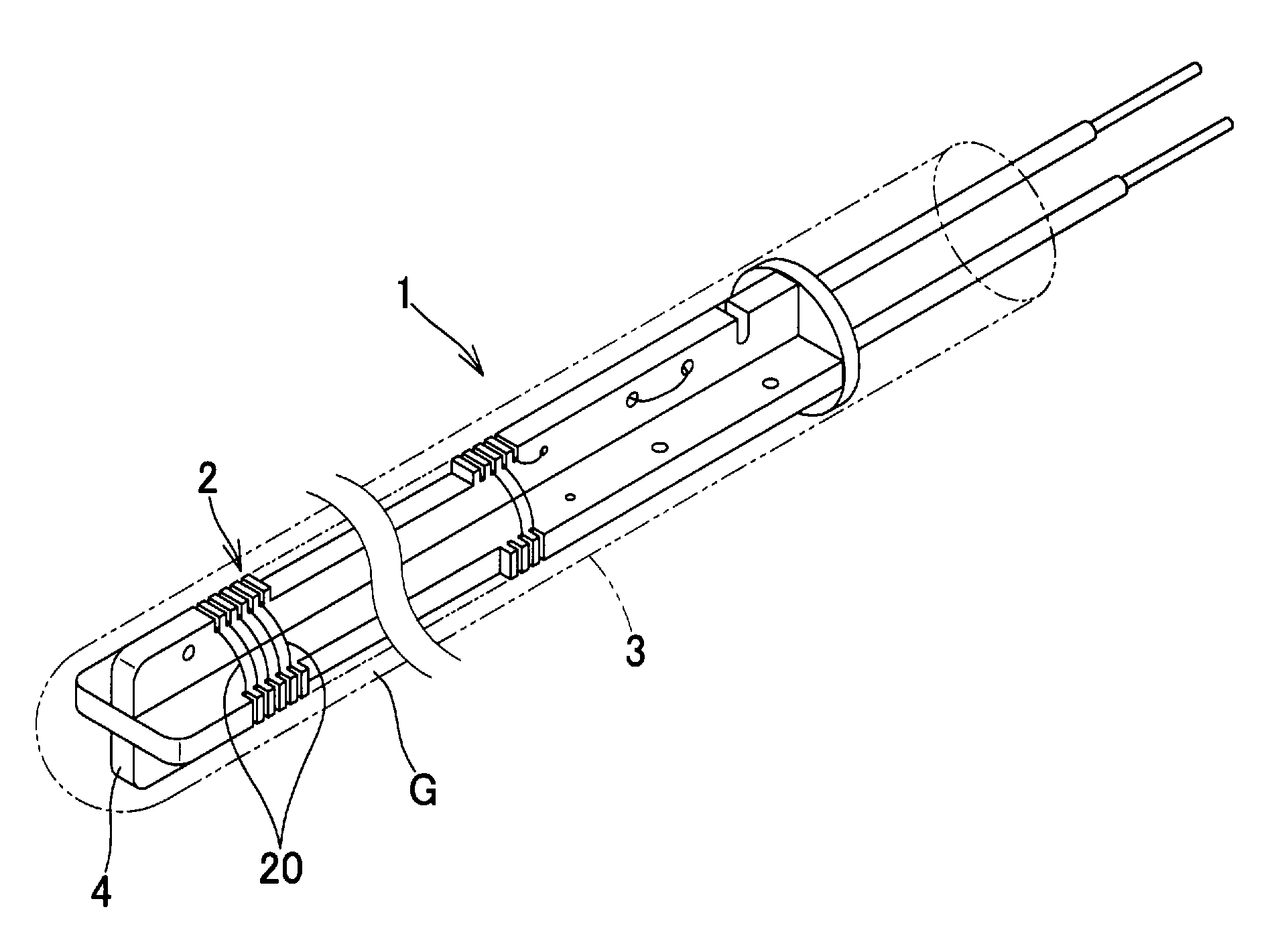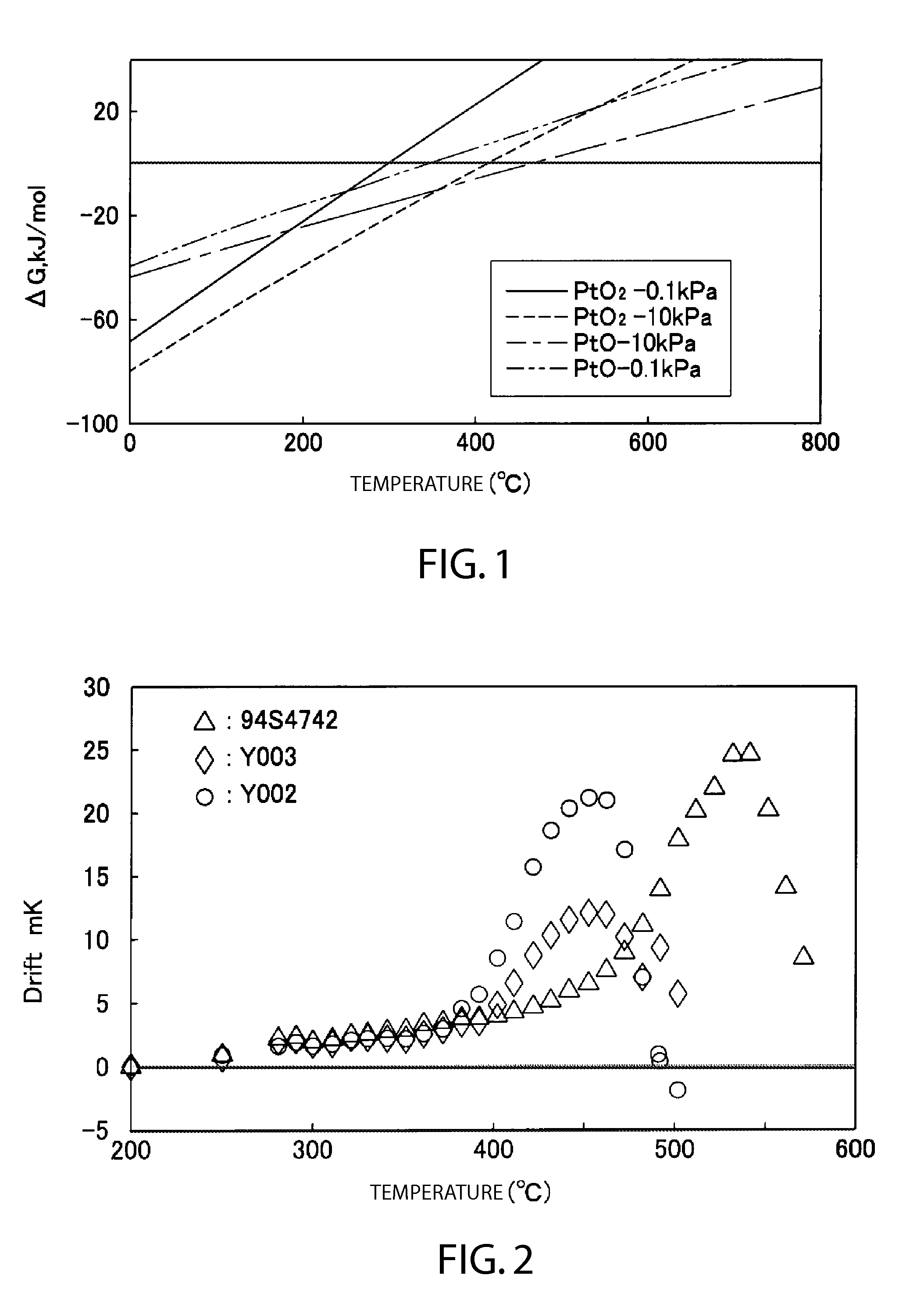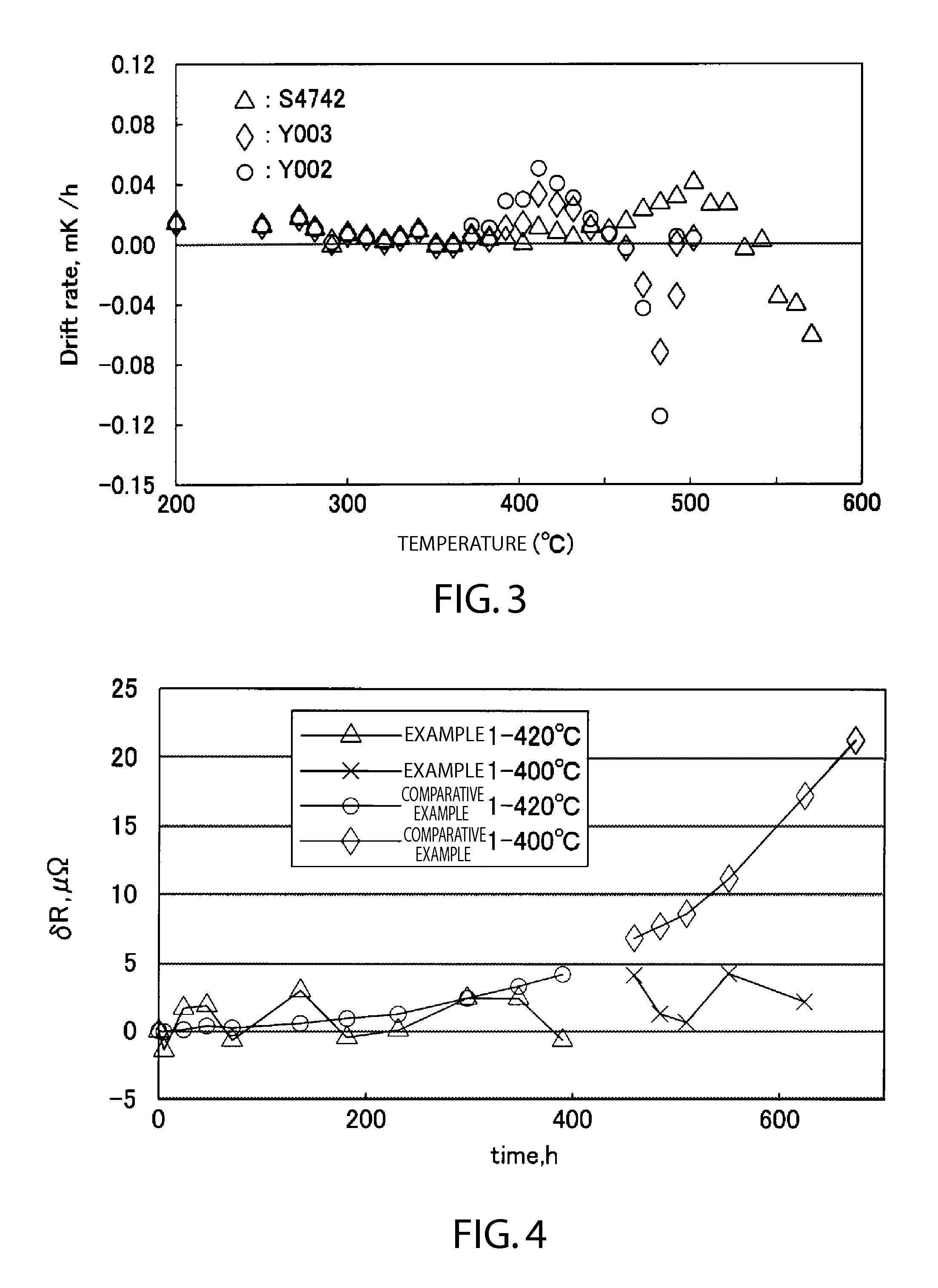Process for manufacturing platinum resistance thermometer
a technology of platinum resistance and thermometer, which is applied in the direction of positive temperature coefficient thermistors, instruments, heat measurement, etc., can solve the problems of inability to accurately measure temperature, inability to reproduce the relationship between resistance value and temperature, and inability to know the change of platinum resistance wires, etc., to achieve stable platinum resistance and less resistance value variation
- Summary
- Abstract
- Description
- Claims
- Application Information
AI Technical Summary
Benefits of technology
Problems solved by technology
Method used
Image
Examples
experiment 1
(Experiment 1)
[0057]An experiment was conducted to investigate the oxidation-reduction characteristics in the high temperature region using a platinum resistance thermometer of Example 1 produced by the manufacturing process of the first embodiment above and a platinum resistance thermometer of Comparative Example 1, in which only the oxygen partial pressure was modified. The oxygen partial pressure of Example 1 was a trace amount of approximately 0.1 Pa, and the oxygen partial pressure of Comparative Example 1 was 4 kPa at room temperature. The reduction and annealing prior to gas substitution was conducted at a temperature of 670° C. for 10 hours. In Example 1 highly pure argon (oxygen partial pressure of approximately 0.1 Pa) was substituted as the purge gas, and Comparative Example 1 was adjusted such that the oxygen partial pressure was 4 kPa at room temperature, and such that together with argon the total pressure was approximately 100 kPa or less at 900° C. and approximately ...
experiment 2
(Experiment 2)
[0060]Next, an experiment was conducted to investigate the isothermic oxidation characteristics using example and comparative platinum resistance thermometers manufactured following the above manufacturing method of the first embodiment and set to multiple and more detailed final adjustments of the oxygen partial pressures. Using 5 types of platinum resistance thermometer with differing oxygen partial pressures, Example 2 (approximately 0.1 Pa), Example 3 (0.8 kPa), Comparative Example 2 (2 kPa), Comparative Example 3 (4 kPa), and comparative Example 4 (8 kPa), reduction and annealing prior to the respective gas substitutions was conducted at a temperature of 670° C. for 10 hours. The numeric values in parentheses of the various platinum resistance thermometers are the respective oxygen partial pressures at room temperature. FIG. 6 indicates the results of measuring the resistance value variations of the platinum resistance thermometers at 230° C., and FIG. 7 indicates...
experiment 3
(Experiment 3)
[0063]Next, an experiment was conducted regarding stability based on sufficient oxidation. First, after an experiment was conducted to investigate the oxidation characteristics in the low temperature region using three types of platinum resistance thermometers, Y002 (2 kPa), Y003 (2 kPa), and S4742 (8 kPa), and then reducing each at 650° C. for approximately 15 hours, the temperature was maintained at 100° C. and 150° C. for 3 to 4 days. The resistance values of the platinum resistance thermometers were periodically measured at the triple point of water. FIG. 8 indicates the results of measuring the resistance value variations of the platinum resistance thermometers at 100° C., and FIG. 9 indicates the results of measuring the resistance value variations of the platinum resistance thermometers at 50° C. The resistance values indicated gradual drift following the PtO2 curve in FIG. 1. It may be inferred from these resistance value variations that several layers of oxidi...
PUM
| Property | Measurement | Unit |
|---|---|---|
| Fraction | aaaaa | aaaaa |
| Pressure | aaaaa | aaaaa |
| Fraction | aaaaa | aaaaa |
Abstract
Description
Claims
Application Information
 Login to View More
Login to View More - R&D
- Intellectual Property
- Life Sciences
- Materials
- Tech Scout
- Unparalleled Data Quality
- Higher Quality Content
- 60% Fewer Hallucinations
Browse by: Latest US Patents, China's latest patents, Technical Efficacy Thesaurus, Application Domain, Technology Topic, Popular Technical Reports.
© 2025 PatSnap. All rights reserved.Legal|Privacy policy|Modern Slavery Act Transparency Statement|Sitemap|About US| Contact US: help@patsnap.com



